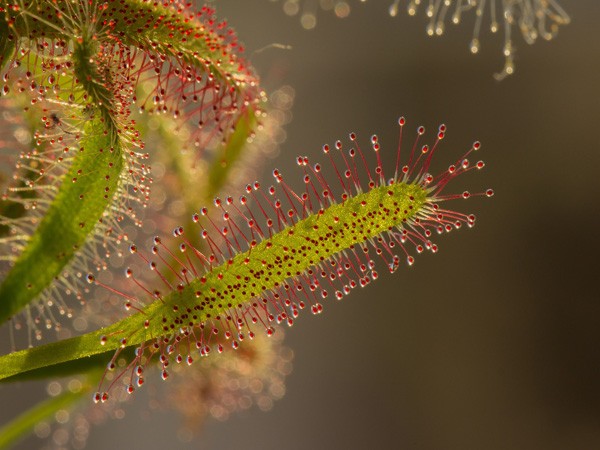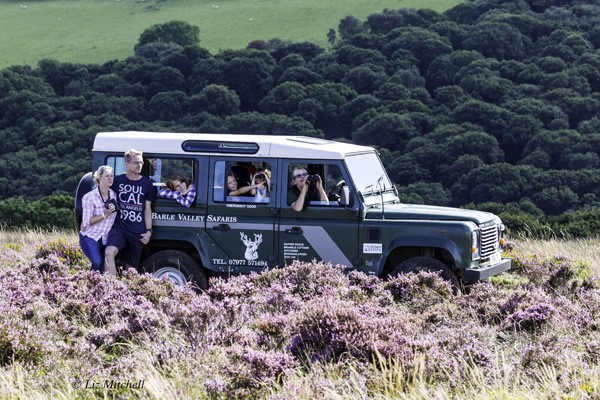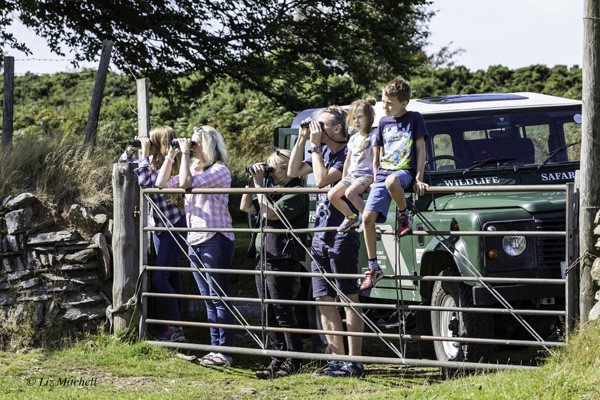Plants On Exmoor
The diverse habitats of the Exmoor National Park produce a great variety of plant life whose types and numbers if enumerated would result in a list far beyond the capacity of this web page.
We will confine our remarks to the plants the visitor is likely to see and which are peculiar to particular habitats in the area.
Drier Moorland
Bell Heather – Evergreen widespread undershrub, with small dark linear leaves and egg shaped crimson-purple flowers.
Cross-leaved Heath – Evergreen grey-green downy undershrub, with leaves in whorls of four up the stems and rose- pink drooping flowers in groups at ends of stems.
Ling – Common evergreen undershrub with small linear dark green leaves in two opposite rows and purple flowers in numerous spikes, occasionally white. Sweet smell.
(These last three plants growing in proximity and in flower in mid to late summer account for the purple colouring of the moorland)
Tormentil – Slender, often prostrate, perennial, thread like stems, yellow flowers, leaves usually three-toothed.
Crowberry – Evergreen prostrate trailing undershrub with flat shiny leaves spiralling up the stem and tiny pinkish flowers at base of leaves. The berry turns from green through pink-purple to black.
Whortleberry (Bilberry) – Erect deciduous hairless undershrub, up to 45cm high with bright green shiny pointed oval leaves and waxy drooping flowers. The berries picked from mid July are small, black and good to eat.
Heath Milkwort – Small, often prostrate perennial with oval opposite leaves crowded together especially near the base. The flowers are small and attractive, usually dark blue or dark pink, sometimes in a lighter blue.
Lousewort – Low spreading semi-parasitic perennial with toothed pinnate leaves and bright pink flowers.
Heath Bedstraw – Low, often prostrate, hairless perennial with tiny white flowers in sprays, which have a sickly scent.

“Bell Heather – Evergreen widespread undershrub, with small dark linear leaves and egg shaped crimson-purple flowers.”
Peaty or Boggy Moor
Common Sedge – Variable sedge with three angled stems, narrow greyish leaves and short unstalked flower stems.
Purple Moor Grass – Variable, coarse, slightly hairy grass forming dense tussocks with a purplish look about the long branched flower head. The flat grey leaves turn to pale ochre in autumn giving a tawny golden appearance over the ground. In winter the tough leaves blow about and form large balls providing the alternative name of ‘Flying Bent’.
Cotton Grass – It has several nodding heads on single round stems and long cottony threads when in fruit. It make conspicuous white patches in boggy places.
Harestail – Similar to Cotton Grass forming tussocks. It has a single erect head, pale yellow in flower, white and fluffy in fruit.
Heath Rush – Tough rigid rush 15-45cm high with wiry grooved leaves and stiff leafless stems bearing terminal clusters of pale silvery-brown flowers. The egg-shaped fruits are larger than in most rushes.
Mat Grass – Fine wiry hairless grass forming dense mats with very fine small flowers the heads being on one side of the stalk.
Bog Asphodel – Small creeping perennial with tufts of flat iris-shaped leaves green to orange in colour. The bright yellow star-shaped flowers, with orange anthers and fruit, grow in dense patches lighting up boggy places with brilliant orange splashes.
Deer Sedge – Densely tufted rush-like plant with narrow wiry stems flowering on the tips. It makes large areas of bright russet in autumn.

“Cotton Grass – It has several nodding heads on single round stems and long cottony threads when in fruit. It make conspicuous white patches in boggy places.”
Rocky River Valleys
Great Woodrush – Grows in big tufts up to 60cm high and has bright green, glossy, hairy leaves and chestnut-brown flowers in groups of three in loose clusters.
Cow Wheat – A weak semi-parasitic plant that grows in and near rocky places. It has yellow two-lipped flowers found in pairs up one side of the stem which flower as late as September.
Hartstongue – Distinctive fern, with undivided leaves, in tufts, long and strap-shaped.The plant varies considerably in size.
Hard Fern – An attractive fern 10-35cm long with tough dark green leaves. Easy to distinguish as some of the upright leaves are thinner and wirier than the others.
Common Spleenwort – Small tufted fern with dark green oval leaflets up a dark wiry mid-rib.
Black Spleenwort – Small tufted graceful fern with two or three shiny green triangular pinnate leaves or leaflets, toothed and pointed. The stalk is blackish.

Acid Bogs
Bog Pimpernel – Slender hairless mat-forming perennial with oval leaves, opposite up prostrate stems. The delicate shell-pink flowers open in the sun and form pools of pink among spagnum moss bogs.
Marsh Violet – Small hairless violet with shiny bright green leaves, almost kidney-shaped and delicate pinky-mauve flowers veined with dark purple.
Marsh Pennywort – The minute flowers of this prostrate creeping plant are found in whorls at the base of round disc-like leaves which stand erect on a central stalk.
Lesser Spearwort – Small-flowered buttercup found in wet places with pinkish stalks and narrow hairless leaves.
Bog Pondweed – The plant has broad oval bright green leaves and narrower floating leaves not joined to the stalk with long stout flower stalks.
Bog Stitchwort – Weak hairless plant with leaves more like chickweed than other stitchworts. White star-like flowers having petals shorter than the sepals.
Ivy-leafed Water Crowfoot – This plant has shiny fleshy ivy-shaped floating leaves and white flowers.
Sundew – Small insect trapping plant with a rosette of stalked thick round reddish-green leaves covered with sticky hairs . These curve inwards to trap insects.
Marsh St. John’s Wort – Has downy greyish leaves and yellow resin-scented flowers. It forms greyish mats in boggy places.

“Sundew – Small insect trapping plant with a rosette of stalked thick round reddish-green leaves covered with sticky hairs.”



